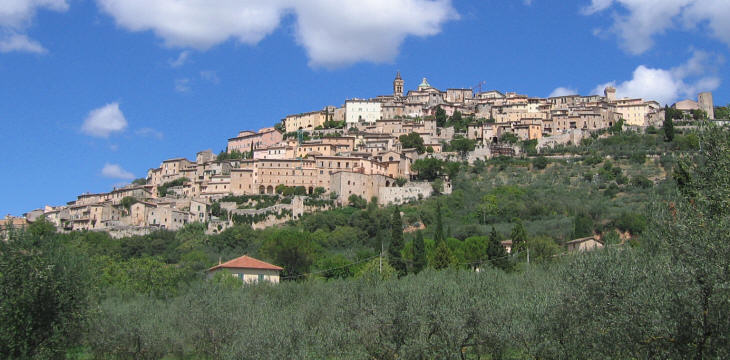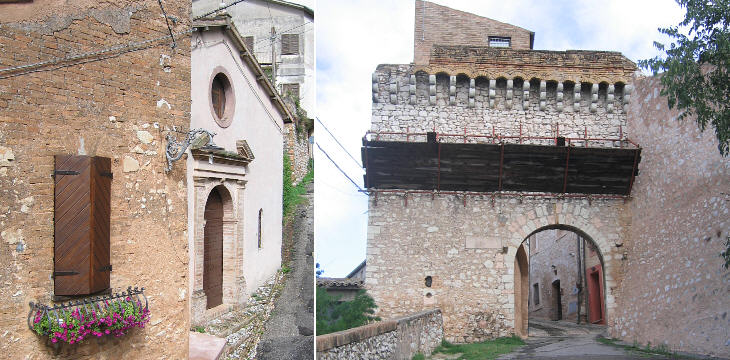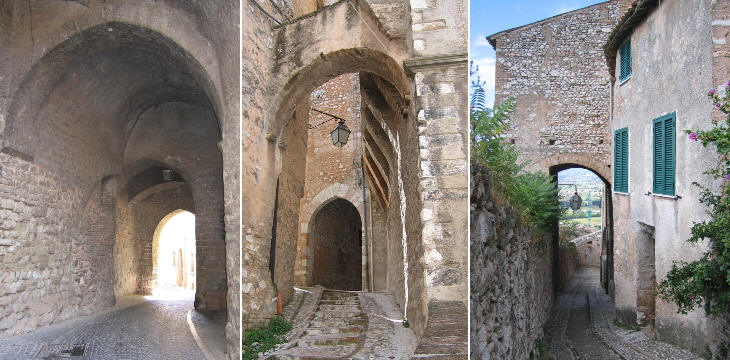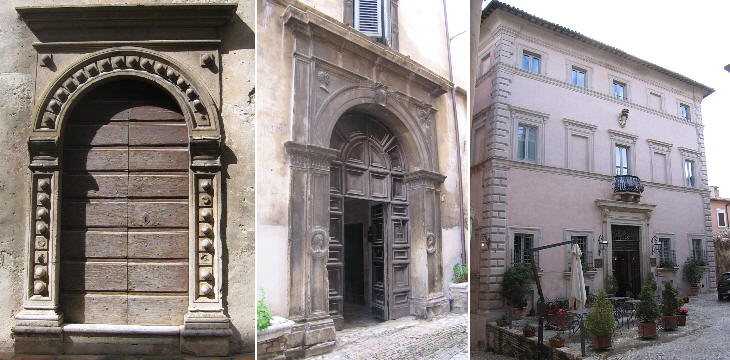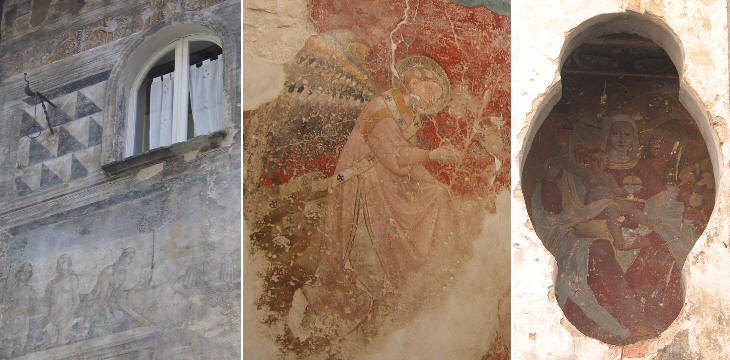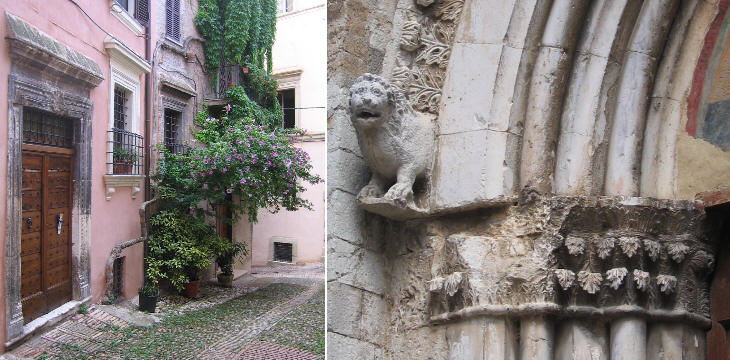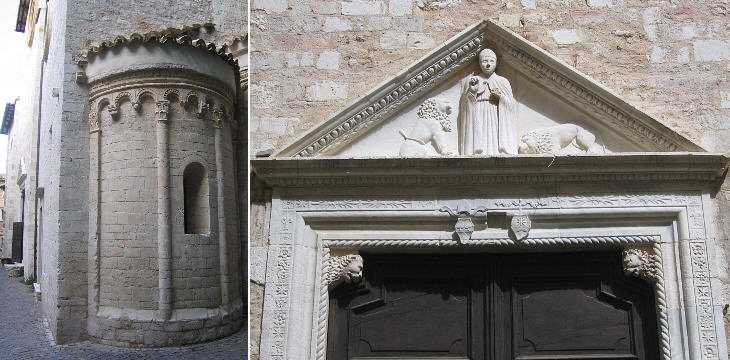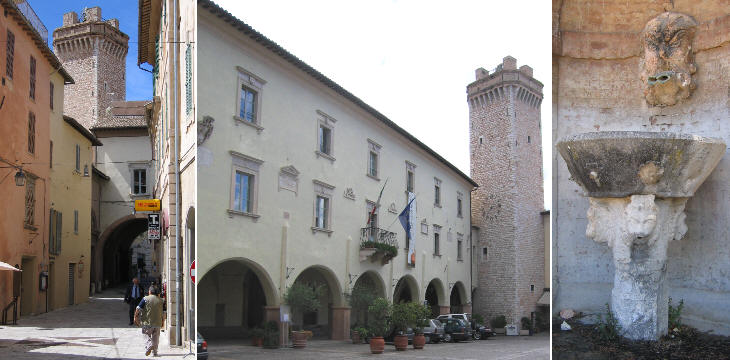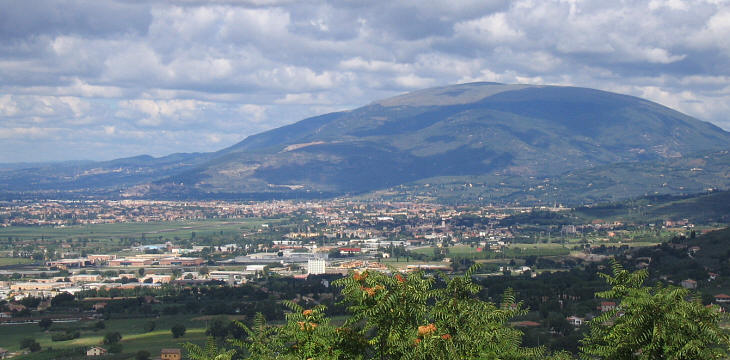  What's New! Detailed Sitemap All images © by Roberto Piperno, owner of the domain. Write to romapip@quipo.it. Text edited by Rosamie Moore. Page added in November 2006. |
8:14 from Termini Everyday a train leaves Termini at 8:14. First stop: Orte; second stop Narni; third stop Terni; fourth stop Spoleto; fifth stop ... 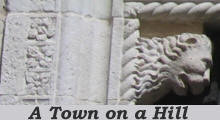 Trevi Trevi(detail of S. Emiliano) The train leaves Spoleto and moves northwards with views on the sources of the Clitumnus, a small stream celebrated by Virgil in his Georgicae, a poem dedicated to the pleasures of a rural lifestyle:
Virgil envisaged that the oxen which were traditionally sacrificed (suovetaurilia) during a Roman triumph were bred in the meadows near the Clitumnus. The countryside landscape celebrated by Virgil has not lost its evocative power.
A few miles north of the Clitumnus the conical hill of Trevi retains the appearance which made many Romantic travellers compare its sight with that of the tower of Babel portrayed in Brueghel's paintings (see an external link with many images of the tower). Trevi is surrounded by olive groves and its low medieval walls still mark the limit of the town.
A winding modern road links the railway station with the top of the town, but accessing Trevi by the old way is much more evocative: the walls were built in the XIIIth century in a period of economic growth which saw the expansion of the town from the very top of the hill (where the ancient Roman Trebiae was located) to its lower part.
The reference to the Tower of Babel was not justified only by Trevi having a conical appearance, but also by the spiralling street which leads to the top of the town: Portico del Mostaccio was one of the gates of the ancient town.
The Valenti family played an important role in the history of Trevi; several palaces are named after them: two members of the family were appointed cardinals.
Wandering through the narrow streets of Trevi leads to discovering some interesting paintings of various periods, including a typical Renaissance graffiti decoration.
The rich countryside around Trevi has always provided some wealth to the town: so there are both Renaissance palaces and richly decorated medieval churches.
Trevi cathedral is located at the top of the hill on the site of a Roman temple dedicated to Diana and more exactly to Diana Trivia, patroness of trivia, a place where three roads meet. The name of the town derives from that of the goddess; the original medieval church was modified several times and its orientation was changed: the apse is part of the XIIth century building, while the portal is a XVth century work. Umbria and especially the part near the Apennines is a seismic region and the cathedral was damaged by various earthquakes; the most recent one occurred in 1997 and it severely hit nearby Foligno, while Trevi suffered lesser damage.
The Town Hall is another building which the inhabitants of Trevi had to repair several times, in particular after a 1703 earthquake, so the current palace is a mixture of different styles, while the strongly built tower is basically that erected in the XIIIth century. Fontana di Trevi is one of the Roman "must see", but Trevi has very little to offer from this point of view, the only historical fountain being a rather modest XVIIIth century work made by assembling some medieval elements. The official name of the town is Trevi nell'Umbria to distinguish it from Trevi nel Lazio, a very small town near Subiaco.
Move to Foligno. 
1864 clickable map of Umbria |
